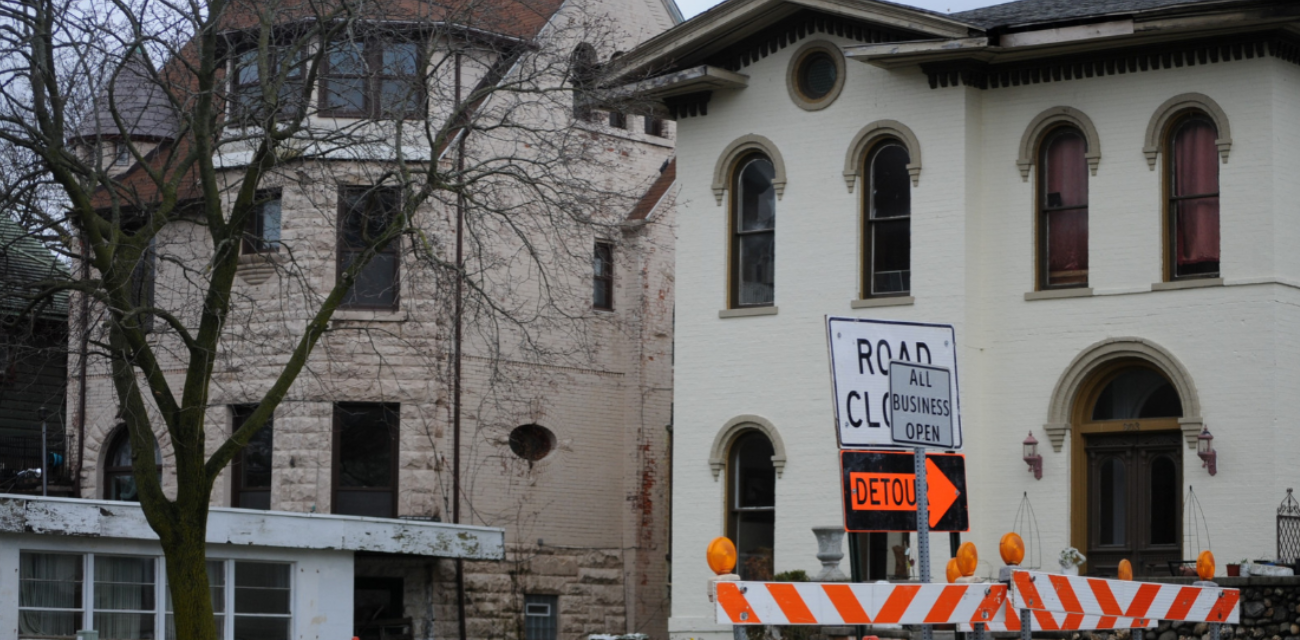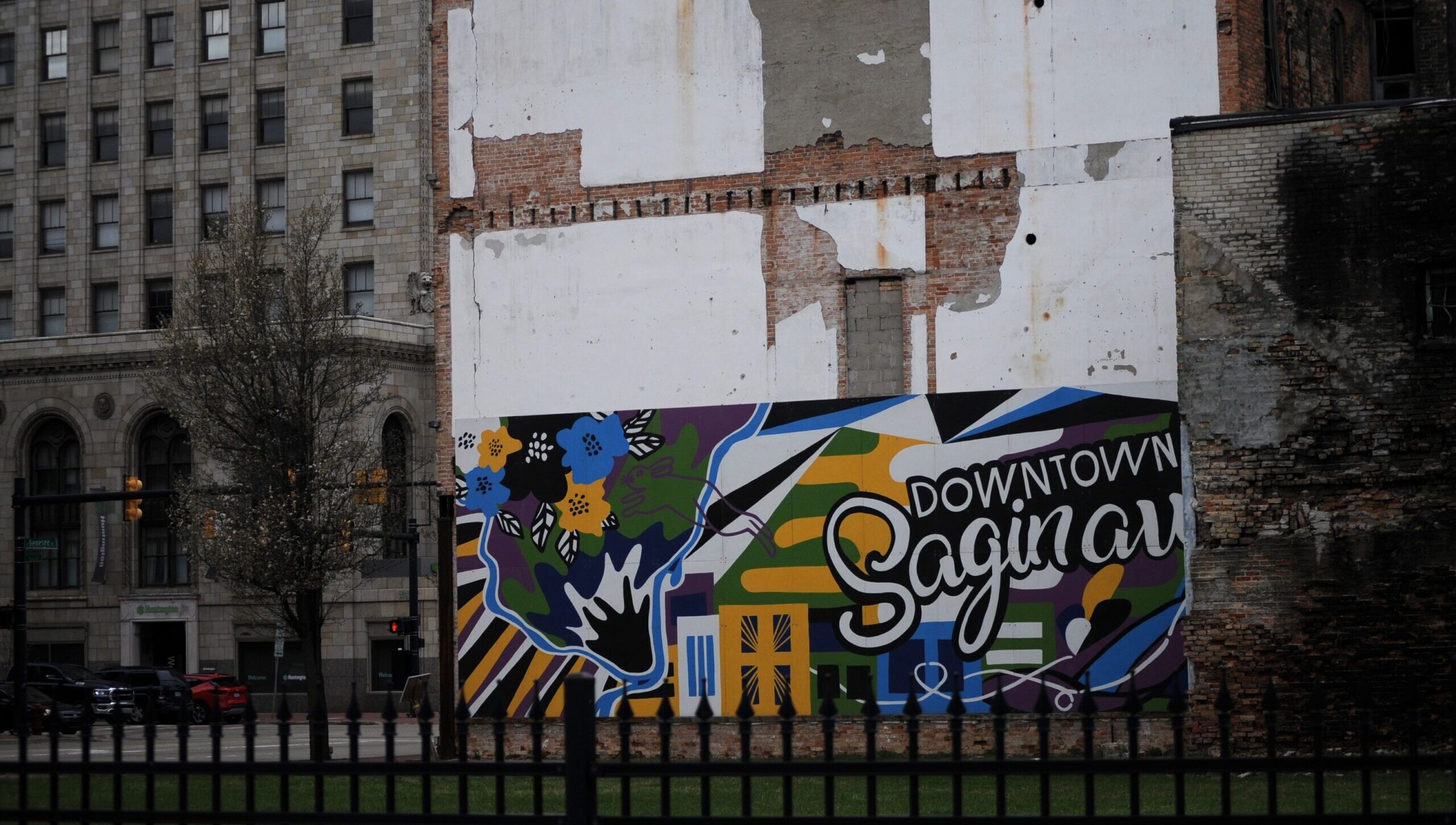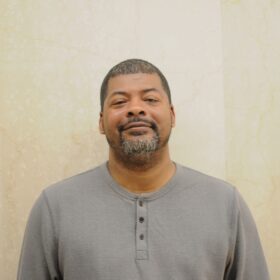Real Representation? That’s no (Saginaw) CAP

One of the tenants of the Michigan Environmental Council’s Project Greenprint is to address the aging and dwindling housing stock that the residents of Michigan are beholden to. Saginaw and its people are well aware of the crises facing communities across the state.
The city of Saginaw’s recent history is a microcosm of the greater issues facing communities across Michigan: misplaced governmental priorities, aging house stock and a sense of abandonment from industry.
There is a bastion of hope to be celebrated amongst it all. An organization that advocates and educates for all the right reasons.
Real representation? That’s CAP
Jeff Bulls has lived in the city his whole life; he’s Saginaw through and through. Bulls is an advocate, organizer, activist and the president of Saginaw Community Alliance for the People (Saginaw CAP), a Michigan Environmental Council member group.
Saginaw CAP was created out of necessity; it first formed during the pandemic when the federal government was awarding American Rescue Plan Act dollars to local governments across the state.
Bulls and other eventual Saginaw CAP founding members reached out to the city government to set up meetings not only to ensure the funds were being pointed in the right direction, but to make sure Saginaw was getting its fair share. These attempts were rebutted.
Not taking no for an answer, early-days Saginaw CAP began “hitting the streets,” as Bulls put it, bringing people together to talk about what improvements they might want to see in their community. Bulls said it shouldn’t have been him and his peers creating these meetings; it should have been the city.
“I tell some of the city council people even today, ‘You guys are responsible for the formation of Saginaw CAP because we took that no and did it ourselves. We don’t need you,'” said Bulls.
Saginaw CAP was successful in its advocacy; residents in the community got the investments from federal dollars they wanted and the full funding was boosted from $52 million thanks to additional demographic data provided by Saginaw CAP that showed the need was there.
This and the successes that followed caught the attention of officials in the city. Bulls recounted the reputation that started to precede his group.
“Once we start laying out what the problem is, how it got here, what entity is responsible, a lot of that starts to shake the foundation. Even people in power are like, ‘Ok, he’s kind of telling the truth here. He’s kind of opening Pandora’s box, and so people get to scrambling.”‘

Reinvention, of city, of community
Saginaw CAP is by the community, for the community; before recently hiring its first employee, the group was completely composed of volunteers from Saginaw. The diversity of their skills were a perfect match for making effective change advocating for the people of Saginaw, and they’re proud and impassioned to do it.
“It’s very rewarding because this is my home,” said Bulls “This is where I was born and raised. This is where my parents were born and raised. My grandparents actually migrated here for GM.”
At the center of what makes Saginaw CAP successful are advocacy and education. It’s how it got its start and it’s a niche its members fill well. There is no other organization, including, to Saginaw CAP’s website, the city government, “that engages the community in political advocacy.”
Bulls feels that the issues that Saginaw CAP is trying to solve have been plaguing the city since before he was born. These generational inadequacies weigh heavily on those trying to reverse the institutional damage that has been done.
“This is my home,” he said. “I hear a lot of stories from my elders about how great Saginaw used to be, and that’s something I want–if not for me–for my child, to bring it back. It’ll never be the industrial town like it used [to be]. Most towns are dealing with that fate—it’ll never be the same. But can we adjust?”

The ‘green’ zone
On intrastate road trips, Bulls takes notes of the structure and organization of the cities and communities he passes through, taking mental notes for his hometown.
Not all drives are so altruistic in nature.
On a drive through town and “on a whim,” according to Bulls, a city commissioner proposed redistricting a neighborhood to a light industrial zone, dubbed the “green zone,” which would allow for certain manufacturing and packaging facilities to take the place of houses and families.
Bulls discovered the proposal by accident; it was buried in the fine print of an agenda for a meeting he was attending which was totally unrelated.
“The more I dug into it, it angered me… because [of] the audacity to [do] that in a neighborhood,” he said.
Shocked to think that a plainly worded proposal to encroach on the homes of the city’s residents would be tucked away as a minor agenda item, Saginaw CAP dug deeper still.
Bulls felt that these homes should be repaired rather than built over.
People lived in this place. There was a homeless shelter, churches and a community center. People who were staples of the community resided there.
Saginaw CAP had time to respond to this proposal—but not much. It was paramount that the community rally, and quickly. The proposal was set to be voted on.
Getting in contact with community leaders, knocking on doors, working with local reporters—Bulls and the other volunteers educated the community the best they could in that short amount of time.
Prior to their intervention, none of the residents of this proposed zone were aware of the fate that seemed imminent to befall them.
The result?

“We filled city hall and got people there and they were able to tell the planning commission, ‘We don’t want this to happen,'” said Bulls.
Not only did they pack the room, they stuffed it full of community members who were educated on the proposal, its ramifications and what they wanted in its place: a neighborhood with affordable homes, housing repairs and reasonable utility costs.
The proposal was punted and remains in that state today.
This, nearly, “green zone” was also a place where legacy pollution from many of Saginaw’s nine former GM facilities had been festering for decades; an issue unaware to even the Environmental Protection Agency prior to Saginaw CAP’s advocacy. (Residents, however, were well aware. Bulls recalled folks waking up to find light coatings of dust on their cars when the plants were still active.) It is now an issue that is actively being addressed thanks to this Bulls and company.
Heavy industry in the automotive and manufacturing sectors was responsible for Saginaw’s heyday. Its flight elsewhere has made it partly responsible for Saginaw’s current state. It left behind legacy pollution in neighborhoods and waterways. It made folks flee to the suburbs—and investments followed. And it left Saginaw’s remaining residents with a need for better investments in their homes and neighborhoods.
Saginaw CAP, in many ways, is meant to bring the powers that have dictated Saginaw’s success for so long to its people. Now, environmental concerns are finally being recorded and addressed. The public is better equipped to respond to opportunities—or lack thereof—from their local, state and federal governments and shape them in ways that best serve them.
Discover
Power environmental change today.
Your gift to the Michigan Environmental Council is a powerful investment in the air we breathe, our water and the places we love.
Sign up for environmental news & stories.
"*" indicates required fields




